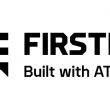Nothing to it
After the terrorist attacks of Sept. 11, 2001, the Joint Commission on Accreditation of Healthcare Organizations mandated that hospitals provide backup communications services, and also establish alternative care sites. These sites, often in schools, typically lack the robust communications systems required for effective disaster response.
When planning its backup communications solution, Lifespan — the state of Rhode Island’s first health system, which was founded in 1994 by Rhode Island Hospital (RIH) and the Miriam Hospital — realized that a highly portable system would provide more value to the community. “We envisioned a solution we could bring to any location that needed emergency communications services, such as a nursing home, or even an open field,” said Peter Ginaitt director of emergency preparedness for Lifespan.
Therefore, in late 2005, RIH executives began investigating ways that healthcare workers, first responders and community members could collaborate at disaster scenes that had no communications infrastructure. Hurricane Katrina had underscored the problems that occur when different organizations are unable to directly communicate with each other.
Lifespan employees had experienced such challenges firsthand in 2003, when they performed medical triage after a Rhode Island nightclub fire. Although the area did have push-to-talk (P2T) radio coverage, the lack of interoperability among the various agencies and hospitals prevented field personnel from communicating with the hospital.
“We saw that although Lifespan’s communications technology worked well for our own community, it did not support collaboration with other organizations,” said Dave Hemendinger, chief technology officer for Lifespan, whose partners now include RIH’s Hasbro Children’s Hospital, Bradley Hospital and Newport Hospital.
The Lifespan team established the following criteria for its mobile communications solution:
- Easy to set up within 30 minutes, in any location.
- Easy to use, even for a layperson. If given easy-to-use communications devices, citizen volunteers could be put to use directing traffic or providing other valuable services that do not require medical or technology training.
- Based on commercial off-the-shelf (COTS) components. A standards-based solution would simplify system design and maintenance.
- Highly portable. The solution had to fit in hospital elevators, small vans, helicopter bays and standard railcars.
- Interoperable with different P2T radio systems, as well as phones and cell phones.
- Interoperability would facilitate collaboration among different organizations involved in disaster response.
No turnkey communications platform met all of the criteria, so Lifespan hired systems integrator CACI to find a solution. CACI worked with Cisco Systems to design a rapid-deployment communications system that met Lifespan’s requirements.
“Cisco offered all the capabilities needed for emergency response, and a one-vendor solution would simplify support from CACI,” Hemendinger said.
To fund solution development, RIH applied for and received a
$5 million emergency preparedness grant from the Department of Health and Human Services. The grant is designed to improve the state emergency care system’s ability to receive, treat and respond to a disaster or a mass-casualty event. The hospital was one of only five in the United States to be selected for the 2007 Healthcare Facilities Emergency Care Partnership Program. As part of the national demonstration project, RIH is sharing best practices with other health systems throughout the country.
Lifespan and CACI designed the system to provide complete voice and data communications capability to hundreds of users through a direct satellite link. “Most redundant communications systems rely on radio alone,” Ginaitt said. “[With this system], we can offer radio, satellite, and wireless voice and data, in one integrated package.”
The solution can operate anywhere in the state and anywhere in the world after the satellite connection is reconfigured. To date, RIH has provided 22 of these systems to hospitals and public-safety agencies throughout the state.
When designing the system, RIH and CACI focused on mobility, simplicity of setup, and ease of use.
“We have developed numerous rapidly deployable communications systems for the Department of Defense that involved satellite or unified communications, but this is the first solution we have offered that delivers all these capabilities in a [complete] package,” said Ira Hostetter, CACI’s business development manager. “The design goal was to make communications completely operational with one click of a button.”
For ease of storage and shipping, RIH decided to package the solution to fit on a secured, retrofitted and strengthened linen cart.
The system is designed so that anybody at the incident scene, including a passerby who wants to help, can establish communications within 30 minutes by following simple instructions. Other community volunteers can be given wireless IP phones, which operate like cellular phones, to direct traffic and perform other useful tasks that don’t require specialized training.
During solution testing, RIH invited people without technical backgrounds to establish satellite communications using the system. “We observed as they worked, and iteratively revised the instructions to make them very clear,” said Elaine Palm, Lifespan’s enterprise network manager.
In addition, CACI designed the system so that responders could dial the wireless IP phones on another system using the same five-digit number, regardless of where the system is located.
“Five-digit dialing is important because it saves time, and every minute counts during emergency response,” Palm said.
When a mishap occurred during street construction, a Lifespan clinic in northern Rhode Island lost all inbound and outbound communications. RIH promptly delivered its system and communications were restored within 30 minutes. Staff used wireless IP phones to continue to make and receive calls, and connected wirelessly to the hospital network to access clinical and administrative systems.
“If we had not had the solution, communications would have been down for four hours, affecting patient care,” Hemendinger said.
Last year, Lifespan used one of these systems in a medical triage proof-of-concept exercise at the Rhode Island National Guard Air Show. The state’s disaster medical assistance team and the military each were given a system to use for incident command and control, and communications. “Within minutes, we connected two separate radio infrastructures, enabling collaborative incident command,” Hemendinger said. “Personnel were able to use the system with nominal support and training.”
The medical team used the satellite-based voice and data network to register patients when they arrived at the tent and to track them for the duration of care. Both incident commands could reach each other by phone or by radio. “Personnel carrying inexpensive, consumer-grade radios could communicate directly with other personnel using $4,000, 800 MHz radios,” Ginaitt said. Spacenet, the satellite services provider, tied together the local phone companies, and performed without failure during 24 hours of testing.
RIH has begun an awareness program about the RESCQ system for local, regional, and national first responders and military organizations throughout the United States. “When we first envisioned this solution, we thought we would be successful if every hospital had access to rapidly deployable communications,” said Hemendinger. “Now we realize that the solution can play an important role in global disaster response.”
Kevin Parra is a homeland security solutions marketing manager for Cisco’s Global Government Solutions Group.
Quick and nimble
RIH can use its rapid-deployment satellite communications systems in any type of emergency situation, including:
Pandemic preparation: As directed by the Rhode Island Department of Health and Human Services, RIH can quickly establish a mini-hospital at a school, using the system for voice and data services.
Communications outages in care facilities: If a windstorm takes out a hospital or nursing home phone system, a healthcare worker can re-establish phone and Internet access in less than 30 minutes.
Search and rescue: When a Rhode Island police officer was missing and believed to be in a rural area that was out of radio range, the state provided systems for the searchers, who communicated via satellite with a remote operations center.
Source: Cisco Systems
Related Stories

















In fact the emergency service
In fact the emergency service is widely spread all over the country after various incidents; therefore people are liable to get proper support and beneficial services. Especially after the horrible incident of 9/11 American government should take crucial step towards providing emergency care services to the people through the help of various communication programs.